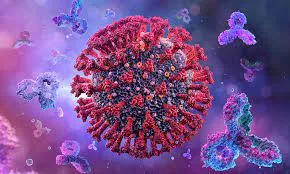Ottawa – Statistics Canada, in partnership with the National Microbiology Laboratory from the Public Health Agency of Canada, continues to collect the Canadian Wastewater Survey (CWS) to better understand the levels of SARS-CoV-2, the virus that causes COVID-19, in the wastewater of five Canadian municipalities (Metro Vancouver, Edmonton, Toronto, Montréal, and Halifax). As the COVID-19 pandemic progresses, this survey continues to provide valuable insights on the evolving levels of infection in the population.
After the first Omicron wave (December 2021 until March 2022), there was a gradual countrywide relaxation of public health measures (e.g., mask mandates were lifted in February/March 2022) and clinical testing. To many Canadians, it felt like life had returned to normal. During this period, the CWS continued to show high levels of the virus circulating in wastewater throughout the five municipalities, and Statistics Canada data on COVID-19 in Canada showed that deaths attributed to COVID-19 were the highest to date in 2022.
In fact, analysis of wastewater results from the most recent reference period available (January to December 2022) shows that in Metro Vancouver, Edmonton, and Halifax, wastewater viral loads were almost as high (or higher) than during the first Omicron wave. This could be because people behaved differently as restrictions were lifted, providing more opportunities for the virus to spread. At the same time, an increase in vaccination rates and infection-acquired immunity played a role in limiting the severity of outcomes. These shifts in societal behaviour, immunity, and changes to the virus continue to be reflected in current wastewater analysis, where high levels of the virus continue to be seen.
These results demonstrate that ongoing monitoring of the SARS-CoV-2 virus (or other infectious diseases) through wastewater continue to provide valuable information for public health decision-making.
Starting in 2021, Statistics Canada produced the Daily COVID-19 Restrictions Index, which gives a numerical value to the levels of public health restrictions on a provincial and territorial basis. Using this index as a reference, we looked at changes over time in SARS-CoV-2 levels in the wastewater representing almost one-quarter of the Canadian population. It was observed that before the arrival of Omicron in Canada, which occurred in early December 2021, and the relaxation of public health measures, there were distinct peaks of viral concentration in wastewater coinciding with waves of infections. After the relaxation of public health measures (e.g., lockdowns), the viral concentration in all five municipalities increased and displayed a lot of variability, suggesting that viral transmission increased as society reopened.
While current scientific best practices recommend avoiding direct comparison at face value between municipalities, there are similarities in how the overall pattern of SARS-CoV-2 in wastewater changed after public health restrictions were reduced or eliminated in each respective province.
The first infographic shows both the per capita SARS-CoV-2 viral load in wastewater from Halifax from early 2021 to early 2023 (as the blue line), and the Daily COVID-19 Restrictions Index for Nova Scotia from early 2021 to mid-2022 (as the orange line). Viral levels measured in wastewater from this municipality were highest and most variable in 2022 compared with other points during the pandemic. The highest rates of SARS-CoV-2 levels in Halifax occurred shortly after provincial public health restrictions were reduced to their lowest levels. Specifically, these restrictions were mostly eliminated near the end of March 2022, and the highest viral level was observed in mid-July 2022, where the measured viral levels were approximately 10 times larger than those observed before the emergence of Omicron.
The pattern in Montréal, where the Omicron variant arrived in early November 2021, was slightly different. Viral levels became moderately high and irregular after Omicron emerged in this municipality, and shortly after provincial health restrictions increased in early 2022 to combat the spread of Omicron, viral levels decreased. However, as restrictions were reduced later in 2022, viral levels increased again. Toronto displayed a similar pattern to Montréal, with lower levels circulating during summer and fall.
In Edmonton’s wastewater, a more intense and variable pattern emerged as restrictions were reduced in early March 2022. There were very high viral levels during most of 2022, with signals that were comparable in intensity to the first Omicron wave.
Data from Metro Vancouver displays a similar pattern to Edmonton, with maximum viral levels comparable to the distinct pre-Omicron and Omicron waves. Overall, wastewater data show not only that the virus did not go away, but that its levels increased considerably across Canada during 2022, and that Omicron remained a concern for public health. In fact, according to Statistics Canada’s provisional weekly death counts, deaths attributed to COVID-19 in Canada were higher in 2022 than they were in 2021 (16,260 in 2022, compared with 14,745 in 2021) even though Statistics Canada’s Canadian COVID-19 Antibody and Health Survey demonstrated that population immunity is now higher than it was during 2021.
Future of pandemic and wastewater epidemiology in Canada
As the pandemic progresses, there are a few potential scenarios that could play out. One possible scenario is that the virus will disappear from the population, in which case it would not be detected at considerable levels in wastewater. Another possibility is that the virus will become endemic, displaying a pattern much like the last half of 2022 where viral levels remained moderate or high. Current measurements seem to indicate that the second scenario is more likely, but it is still too early to tell. In an endemic scenario, wastewater monitoring will remain useful for several reasons. For example, if a new and more severe variant starts to emerge, this system can help to identify where it is happening and how quickly it is spreading, which can then inform public health actions or triangulation with other data. Wastewater can also provide clarity about potential future patterns of the viral disease, whether it be seasonal like the flu, which has higher incidence in the winter, or more like adenovirus, another respiratory virus which causes infections throughout the year.








